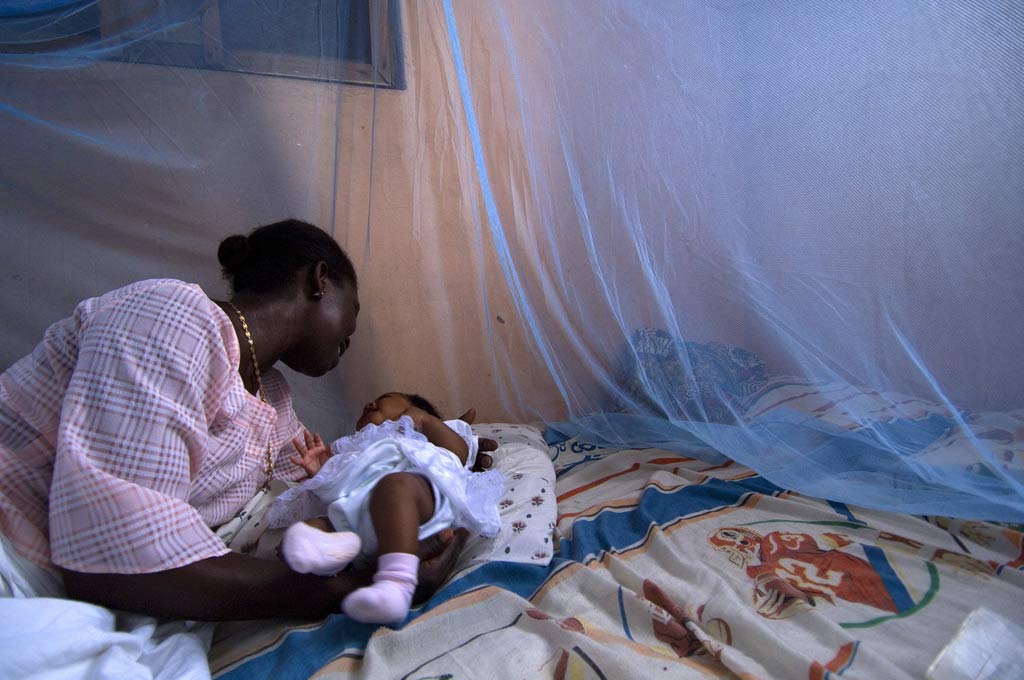Malaria is a quiet problem, killing children and pregnant women in 97 countries; children under five make up 70% of malaria deaths. Malaria’s mosquito vector makes it difficult to eradicate, and pregnant women lack access to lifesaving protective drugs. The new WHO 2016 World Malaria Report calls attention to the importance – and the complexity – of global malaria response.

Most cases of malaria are in Sub-Saharan Africa, concentrated in 22 countries. In 2015, the region was home to 90% of malaria cases and 92% of malaria deaths. Asia also carries a substantial malaria burden, in particular in India. With the exception of India, the thirteen countries with the highest malaria burden in 2015 were all in Africa: Burkina Faso, Cameroon, Cote d’Ivoire, Democratic Republic of the Congo, Ghana, India, Kenya, Mali, Mozambique, Niger, Nigeria, Uganda and United Republic of Tanzania.
The 2016 World Malaria Report describes ongoing progress, but progress that slowed by weak health systems and a lack of funds. Funding for malaria control hasn’t increased since 2010, which is not the way to end an epidemic. Funding levels are only 60% of what the WHO has estimated as necessary to achieve anti-malaria goals. As a result, malaria remains a threat, especially to women and children. There were 212 million new cases of malaria and 429,000 deaths worldwide in 2015.

However, things are getting better. 212 million new cases is actually a decrease in the annual number, meaning that malaria incidence is trending down. Between 2000 and 2015, malaria case incidence reduced by 41% and malaria mortality rates decreased by 62%. Treatment and prevention are also improving. In 2015, 51% of children with a fever who were seeking care at a public health facility in the 22 African countries where the threat of malaria is worst received a diagnostic test for malaria, compared to 29% in 2010. 53% of the population at risk in sub-Saharan Africa slept under a treated net in 2015, compared to 30% in 2010.
Decreasing malaria incidence has had a complex impact on the mechanics and financials of global malaria response. For example, the per-case cost of treating malaria is actually one the rise. Fewer cases are occurring, but many systemic costs, such as disease surveillance and investigating disease transmission, are fixed. This means that the funding needed does not automatically trend down as cases trend down.
Overall, the report carries a sobering message. Despite the positive changes we have seen in malaria incidence, at the current level of financial support it will be nearly impossible to stop malaria transmission any time soon in the 13 high-burden countries. We will keep seeing incremental improvements. We’ll even see more countries eradicate the disease, especially countries like Kyrgyzstan, where malaria transmission is already rare. Ending malaria in countries with weak and under-funded health systems and high malaria burdens, however, will remain a distant goal without substantial additional investment.
What the report doesn’t say
Malaria doesn’t get a lot of attention. It’s not an exciting global health topic. Possibly, because it mainly affects sub-Saharan Africa, and possibly because it has been around so long that people tend to ignore it. Raising the funds needed to move toward eradication of malaria is going to require a new international commitment to the disease. This report talks about the funding gap and its impact, providing a detailed breakdown of how malaria funding is spent, but has no recommendations for how to revitalize the response.
The report also doesn’t talk much about vaccines. It notes that 31% of research funding goes to developing new medicines, and 28% to vaccine development, but there are only two paragraphs on vaccine development in the report. This is the result of a frustrating lack of malaria vaccine candidates there is only one later-stage vaccine being tested, which is discusses in those two paragraphs. It would have been interesting to read more about why there are so few vaccine candidates, and what could be done to develop more.
One sentence takeaway
We’re making progress against malaria, but it’s slow because funding is stuck at 2010 levels.
